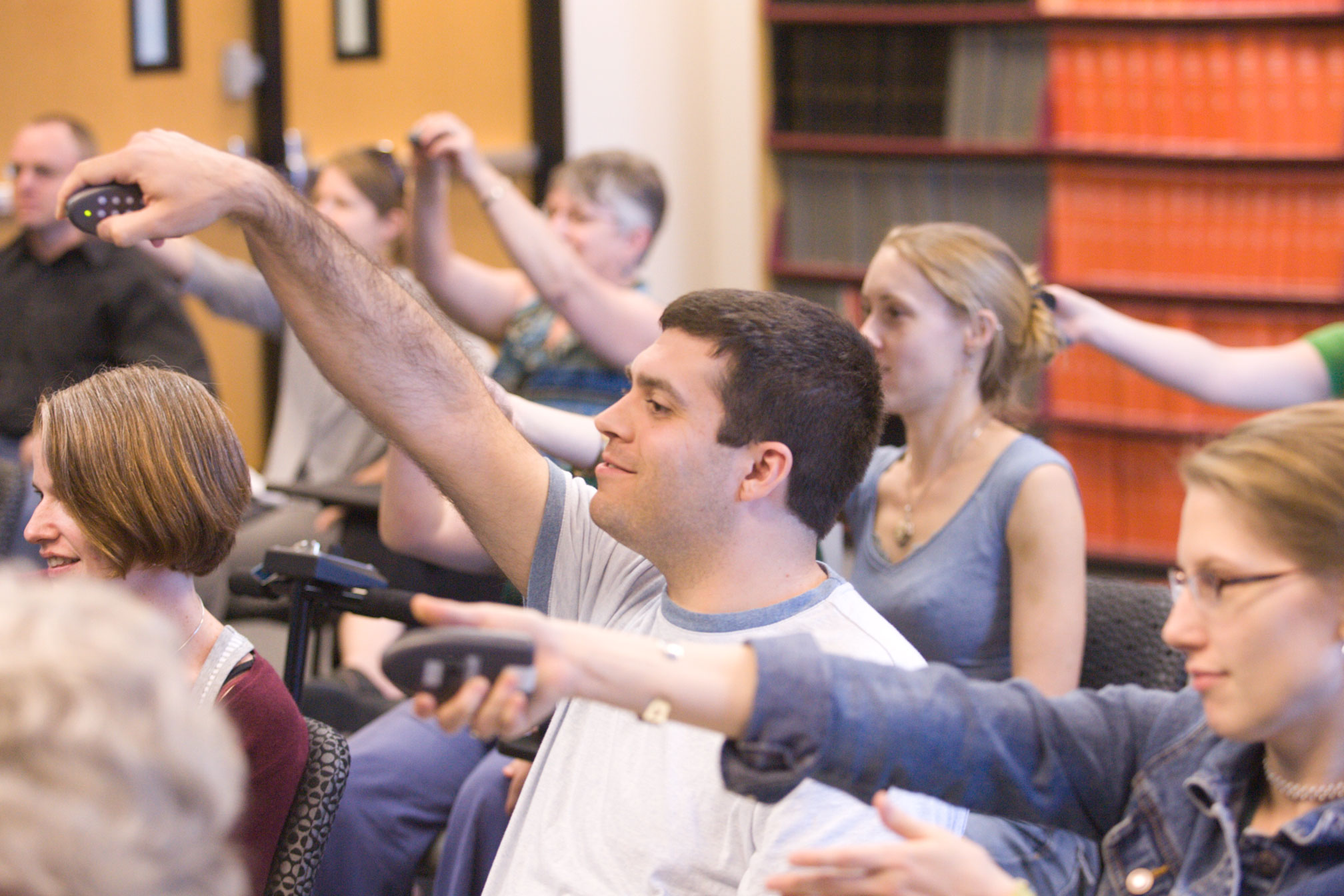The clicker has nudged student assessment another step closer to instantaneous. Faculty across the nation have begun to harness clickers (also called audience-, student- or classroom-response systems) to engage classes and, many times, get up-to-the-second data on how well students are comprehending information.
The digital-age teaching tools, which resemble TV remote controls, allow students to respond to instructors’ questions through an easily operated computer program. The data is collected immediately.
Clicker use was highlighted at a recent on-campus workshop by Derek Bruff, assistant director of Vanderbilt University’s Center for Teaching and a senior lecturer in the department of mathematics.
By asking simple multiple choice questions over reading comprehension or math problems, Bruff said faculty “can really make sure students are learning.
“Or if you’re covering a topic they’re all familiar with, you can move onward, so it requires a little agility there, but it also gives a lot of new feedback on what exactly your students are learning,” he said.
Clickers also jibe with reports Bruff cited showing students have an average classroom attention span of 10-20 minutes. Using clickers routinely throughout class breaks up the monotony of the podium lecture, he said.
“It’s well documented that students like using this technology. But does it help learning?
I haven’t seen any research that using clickers impairs learning in any real way,” he said. “But I have seen some research that says it’s not using them, but how you’re using them, that determines effects.”
Peggy Emmelhainz, a marketing and distribution lecturer in the Terry College of Business, agreed. She began using clickers in her principles of marketing course in the middle of fall semester.
“I’ve used them to replace paper quizzes that I did earlier in the semester,” she said. “I also have used the clicker technology to get student opinions on and reactions to advertisements, as well as to test brand awareness. For instance,
I have shown brand names, logos, and themes and asked students to select the company represented.
I also have used them to stimulate discussion.
“ Recently, I presented students with a scenario and asked them to indicate the most appropriate advertising media option. Then I had them discuss the scenario among themselves and re-answer the same question,” she said. “It’s a way to have students share their opinions, and in some cases, it improves the quality of the answers the second time around.
“I believe that using the clickers keeps the students more engaged,” Emmelhainz added. “I generally have questions spread throughout the hour and 15 minute class.”
Clickers have been around for more than 30 years, but recent advances in technology have greatly helped their potential, Bruff said.
The hardware is lightweight and portable, and usually plugs into USB ports, which come standard on virtually every computer and laptop. The device picks up clicker input through a wireless signal. Professors can choose to record answers anonymously (for discussion-generating questions) or specifically by clicker number (for grading).
While the systems are not flawless—large lecture classes sometimes contain “blackout zones” where the clickers don’t respond, the largest hurdle is usually getting faculty acquainted with using the software, Bruff said.
By using clickers in his mathematics classes, Bruff found that students demonstrated deft ability to solve mathematical problems, but little understanding of the concepts behind the formulas.
He began asking specific questions and collecting the data anonymously during lectures to pinpoint the disconnect between the concept and formula.
Once he found it, Bruff rearranged his teaching to ground conceptual ideas more clearly.
It helps, he said, that students pick up the technology very quickly once it’s introduced.
“I think our students are more adept at clicker technology thanks to their cell phones. . . and faculty are adept too, due to their Blackberries,” he said.


